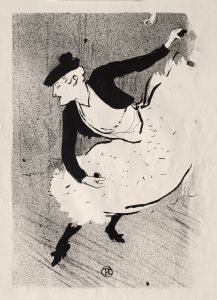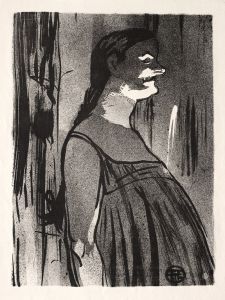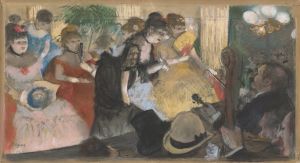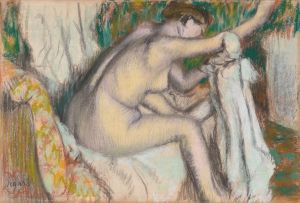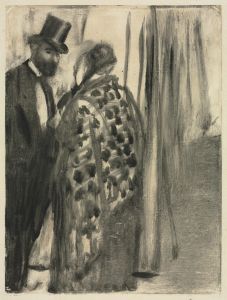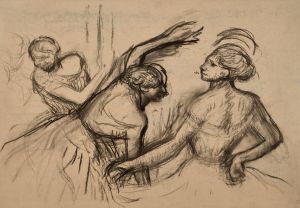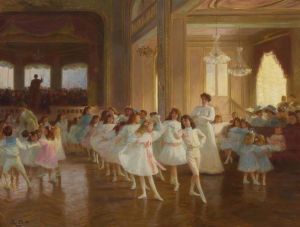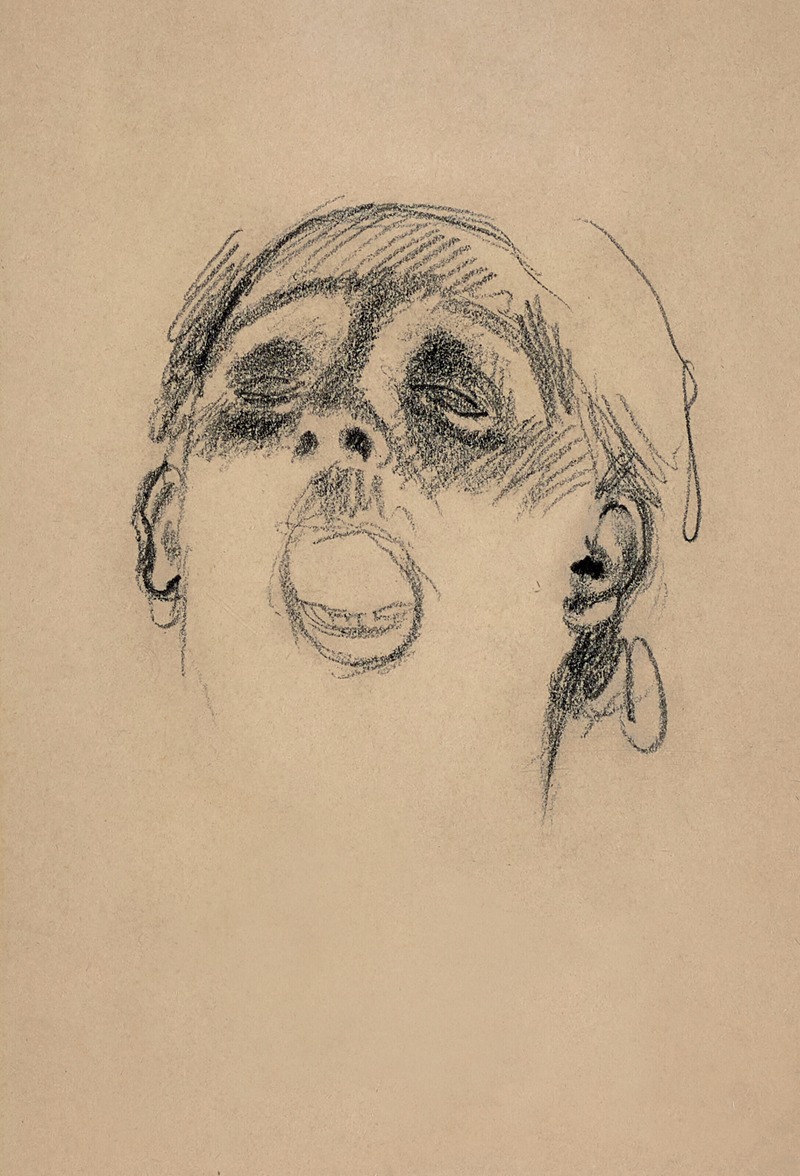
Étude pour ‘La chanteuse au gant ’
A hand-painted replica of Edgar Degas’s masterpiece Étude pour ‘La chanteuse au gant ’, meticulously crafted by professional artists to capture the true essence of the original. Each piece is created with museum-quality canvas and rare mineral pigments, carefully painted by experienced artists with delicate brushstrokes and rich, layered colors to perfectly recreate the texture of the original artwork. Unlike machine-printed reproductions, this hand-painted version brings the painting to life, infused with the artist’s emotions and skill in every stroke. Whether for personal collection or home decoration, it instantly elevates the artistic atmosphere of any space.
Étude pour ‘La chanteuse au gant’ is a work by the renowned French artist Edgar Degas, who is best known for his contributions to the Impressionist movement, although he preferred to be associated with Realism. Degas was born on July 19, 1834, in Paris, France, and became one of the most significant artists of the late 19th century. His work is characterized by its exploration of movement, innovative composition, and the use of pastels.
The painting Étude pour ‘La chanteuse au gant’ is a study for one of Degas's larger works, La chanteuse au gant, which translates to "The Singer with the Glove." This study, like many of Degas's works, reflects his interest in capturing the nuances of modern life and the performing arts. Degas had a particular fascination with the world of opera and ballet, frequently depicting performers in various states of rehearsal and performance.
In Étude pour ‘La chanteuse au gant’, Degas focuses on a female singer, capturing her in a moment of performance. The study likely served as a preparatory work for the final painting, allowing Degas to experiment with composition, form, and color. This approach was typical of Degas, who often created numerous studies and sketches before completing a final piece. His methodical process enabled him to explore different perspectives and refine his vision.
Degas's technique in this study, as in many of his works, demonstrates his mastery of pastels, a medium he favored for its ability to convey texture and light. The use of pastels allowed Degas to achieve a softness and immediacy in his work, capturing the ephemeral quality of the moment. His application of color and attention to detail bring the figure to life, emphasizing the singer's presence and the atmosphere of the performance.
The subject matter of Étude pour ‘La chanteuse au gant’ aligns with Degas's broader artistic interests. He was deeply intrigued by the dynamics of performance and the lives of performers, often portraying them in candid, unguarded moments. This focus on the behind-the-scenes aspects of the performing arts was somewhat unconventional at the time, as many artists preferred to depict more traditional or idealized subjects.
Degas's work, including Étude pour ‘La chanteuse au gant’, is celebrated for its innovative approach to composition and perspective. He frequently employed unusual angles and cropping, drawing inspiration from photography and Japanese prints. This compositional style is evident in the study, where the framing and perspective contribute to the sense of immediacy and intimacy.
Étude pour ‘La chanteuse au gant’ is a testament to Degas's skill as an observer and his ability to capture the essence of his subjects. Through his studies and finished works, Degas offered a unique glimpse into the world of the performing arts, highlighting the beauty and complexity of human movement and expression. His contributions to art continue to be celebrated for their technical brilliance and insightful portrayal of modern life.







